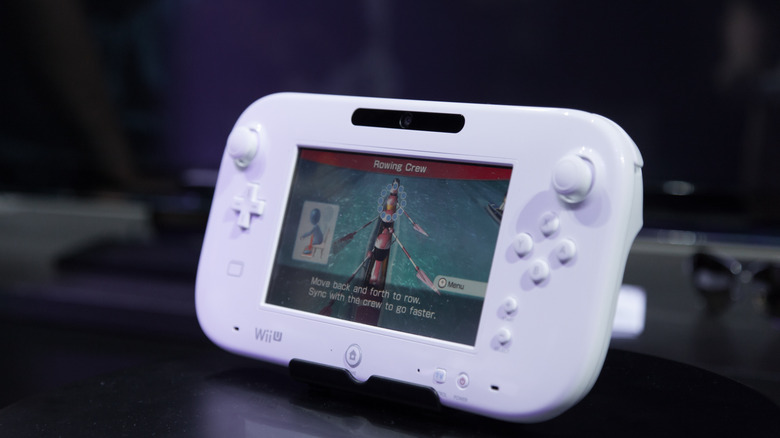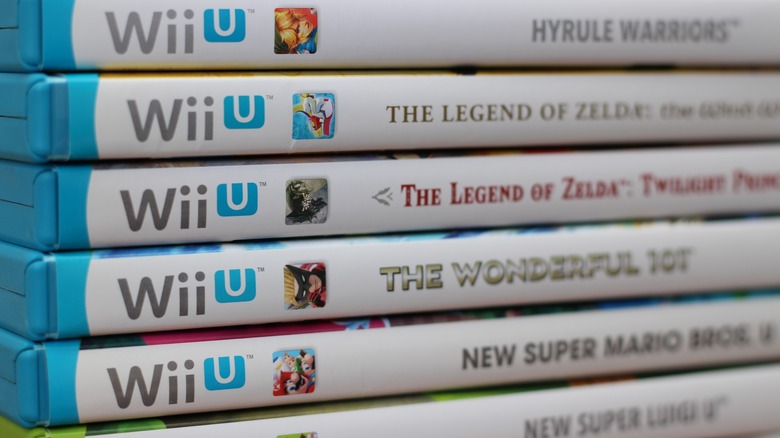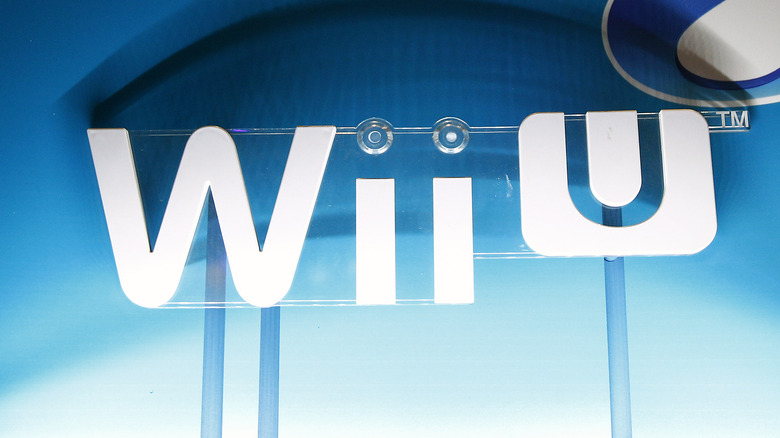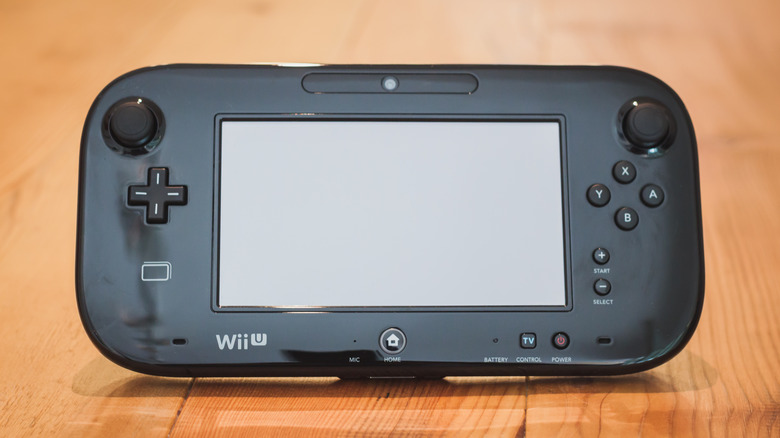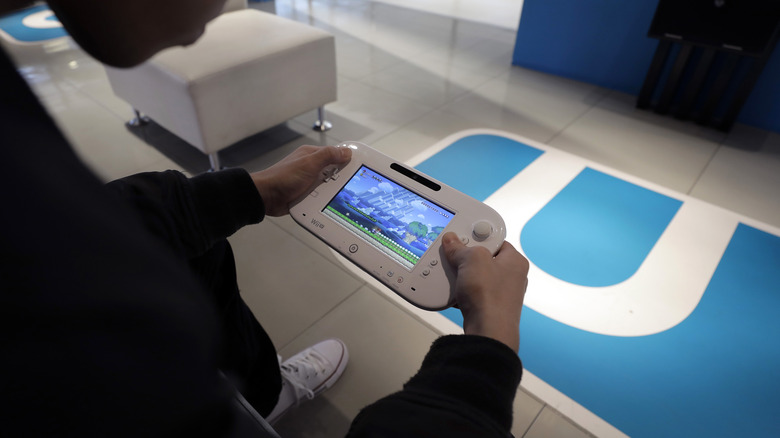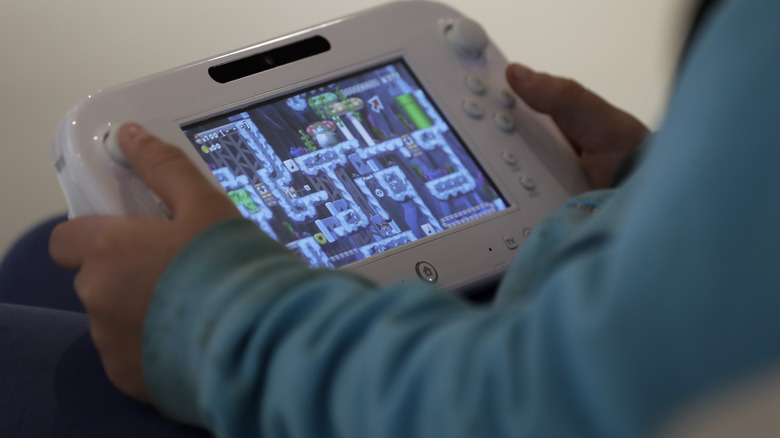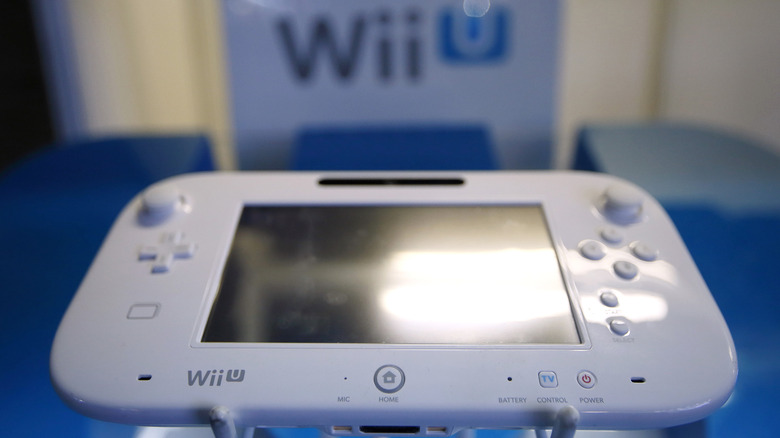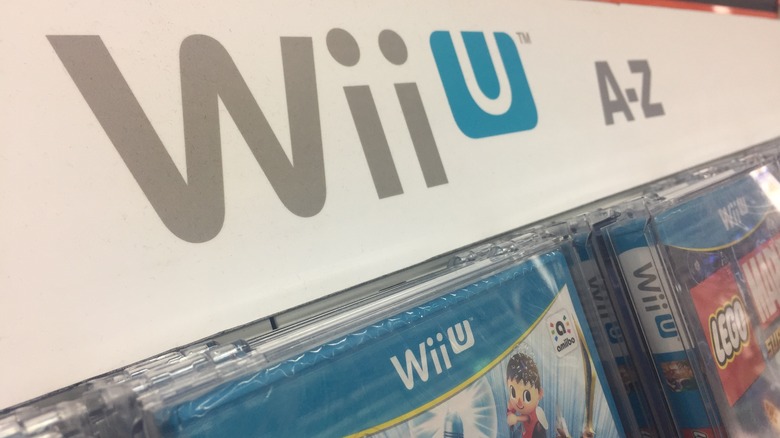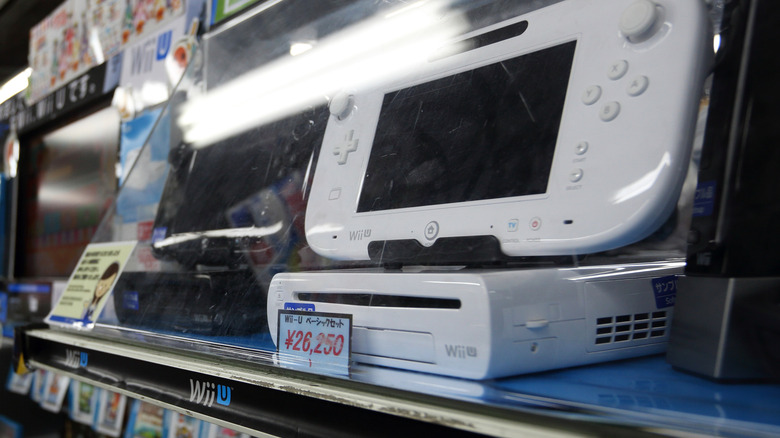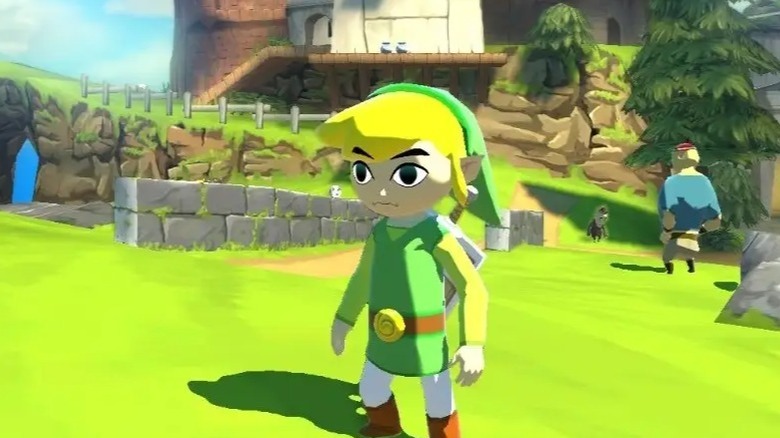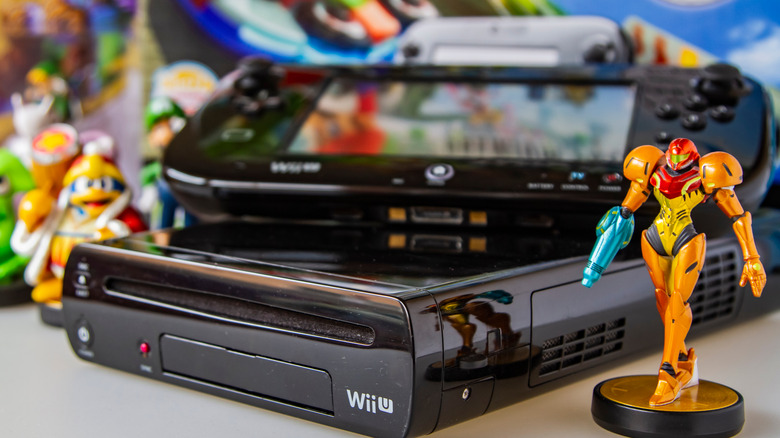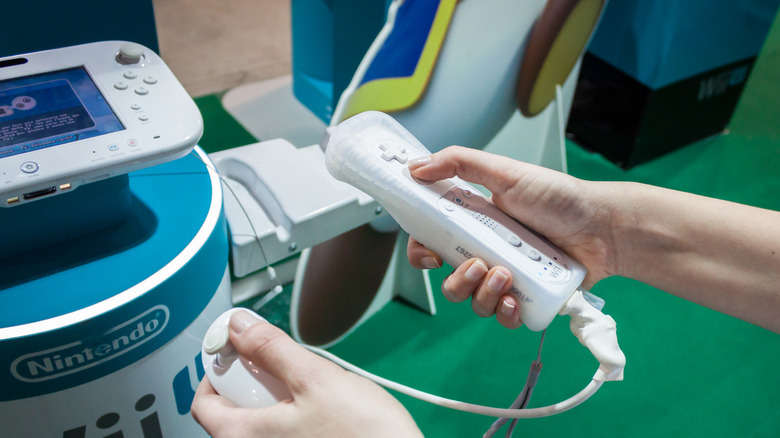Nintendo's Miss: What Wrong For The Wii U (And What Went Right?)
Nintendo is not only one of the biggest names in the gaming industry but also a company that has consistently released successful hardware. Outside of a few notable exceptions — here's looking at you, Virtual Boy — Nintendo has been at the forefront of each generation of home consoles, launching popular systems such as the NES, SNES, and Nintendo 64. In 2006, Nintendo reached new heights when the Wii became a worldwide phenomenon, and set the company up to enjoy sustained financial success.
Unfortunately, Nintendo subsequently dropped the ball when designing and releasing the next video game console. The Wii U was a critical and commercial failure, marking a dropoff for Nintendo as players flocked to the PlayStation 4 and Xbox One. While the firm has since righted the ship with the sales beast that is the Switch, it is hard to imagine how Nintendo managed to get it so wrong once before.
Here, we look into why the Wii U failed so spectacularly by examining what mistakes Nintendo made, as well as noting some of the things it got right with the console.
It released without any great launch games
One of the most essential elements of a successful console launch is the lineup of games that are released alongside the system. Often described as killer apps, a successful console needs to have a slate of great games to grab gamers' interest and make them choose that piece of hardware over the competitors. After all, if two consoles are released at the same time, and one has much better games available right away, most players will choose the one with the better launch titles.
Nintendo has traditionally launched its consoles with highly acclaimed titles to make the systems attractive propositions. For example, the Game Boy hit store shelves with "Tetris," the Super Nintendo had "Super Mario World," and the Nintendo 64 launched alongside "Super Mario 64." Even the Nintendo Wii had "The Legend of Zelda: Twilight Princess," but the Wii U had no such game.
The console arrived with a sizable collection of launch titles, including many third-party titles like "Call of Duty: Black Ops II" and "Batman: Arkham City Armored Edition." However, there were no standout titles that made the Wii U a must-buy, with only the derivative "New Super Mario Bros. U" as a major first-party release.
The name didn't help
Another major contributing factor to the Wii U's failure to replicate the success of its predecessor was the name of the system. What companies call their products might not seem like that big a deal to some, but it can certainly affect sales, especially when combined with other factors. This has been particularly evident with Microsoft's Xbox consoles, with the likes of the Xbox One and Xbox Series X|S names drawing derision and even being partially blamed for slow sales.
When it comes to the Wii U, many people felt that the name failed to truly differentiate the new console from its predecessor. The continuation of the Wii moniker suggested it was not necessarily a brand-new console, but rather an upgrade as it didn't have a unique identity. At the time of the console's announcement, many journalists and gamers were initially confused, believing that the Wii U was an accessory that could be used with the Wii.
Former Nintendo executive Dan Adelman explained to Polygon in 2014 that the name may have been responsible for limiting the marketing appeal of the Wii U. "But the name Wii U is abysmal," he said. "I think that cut sales in half right there."
Marketing confusion over the GamePad
In many ways, the marketing of the Wii U was a lesson in how not to market a new home console. Nintendo has even acknowledged that it failed to properly promote the console effectively, especially when it came to explaining exactly what the Wii U was and how it was different from the Wii. The problem was so bad that executives such as Satoru Iwata had to apologize for the issue and outline ways in which the company planned to do better.
A major contributing factor in the failed marketing campaign was the way that Nintendo was unable to convince gamers that the Wii U was worth buying. In particular, the company didn't fully explain the console, with the focus being entirely on the GamePad. The system itself was rarely shown in advertisements or commercials, with the GamePad regularly taking center stage. This led to the idea that the GamePad was little more than an accessory that could be used with the Wii rather than being part of a brand-new console.
The GamePad wasn't advanced enough
The main draw of the Wii U was undoubtedly the GamePad. This was Nintendo's attempt to innovate even further after the success of the motion controls used for the Wii. The GamePad was a rather large controller that utilized all of the standard buttons, triggers, and joysticks you'd expect in addition to motion sensors and a 6.2-inch touchscreen display. This gave it some unique features, including the ability to play games directly on the GamePad rather than a television screen as well as get an alternative view of the action or see additional in-game information.
While many of these features were good ideas in concept, they were not executed as well as they might have been. There were several reasons behind this, including the fact that the technology simply wasn't advanced or cheap enough to make the GamePad as effective as it needed to be. The controller was bulky and heavy, making it unwieldy to use. The GamePad also had a very limited battery life and could only stream games from the Wii U console on the same network, meaning that it wasn't a truly portable system. Nintendo didn't even allow two GamePads to connect to the console at the same time, despite the console having the ability to communicate with two controllers simultaneously.
Players wanted a more powerful console to compete with PlayStation and Xbox
Although the Wii was a huge success, that didn't mean it was a perfect console. One common complaint was that the console was significantly underpowered compared to the Xbox 360 and PlayStation 3. Games on the Nintendo system couldn't match the graphical capabilities or size of games on the other mainstream consoles. Players wanted a significant upgrade for a successor to the Wii, a console that was capable of displaying full HD images and games that were more on par with titles on competitors' systems.
The Wii U was only able to fulfill some of these hopes. The console did support high-definition games, a first for Nintendo, but it still fell significantly short of both the PlayStation 4 and Xbox One. Both of those consoles were released a year after the Wii U, yet they were much more powerful in terms of raw specs. For those who wanted the very best experience from their games in terms of visuals and performance, the PS4 and Xbox One offered far more than the Wii U. That made Nintendo's hardware a less attractive option, especially to gamers not interested in the Wii U's first-party line-up.
Third-party support for the console dried up
Nintendo has traditionally been less reliant on third-party games than its competitors. While the likes of Xbox and PlayStation do have some killer apps, third-party releases from external publishers have generally been the biggest sellers. That is not the case with Nintendo. The Japanese company has a huge library of insanely popular and highly acclaimed first-party franchises such as "Super Mario Bros.," "The Legend of Zelda," "Pokèmon," and "Kirby" — all IPs that can, at least to some extent, help carry a console.
But even those blockbuster series are not enough on their own for a system to have continued success. That's where a major problem arose for the Wii U, with third-party support almost completely vanishing midway through its lifecycle. There were multiple reasons why publishers largely abandoned the Wii U, making the console far less appealing to those who don't want a second console to play more intensive games like "Call of Duty" and "FIFA."
Of course, the lack of market penetration made the Wii U less commercially viable for third-party developers but this wasn't the only factor. An anonymous developer told Eurogamer that Nintendo made it difficult to port games to the console as dev kits were constantly changing. Moreover, the Wii U was more comparable to the PS3 and Xbox 360 in terms of raw power and performance. Combined with its online limitations, it was difficult for studios to justify the time and effort to release games on the console that would be a significant downgrade to what was available on the PS4 and Xbox One.
Sales were incredibly lackluster
Almost immediately after its launch, it became clear that the Wii U was not going to be a big seller. Just a month after it hit store shelves, sales for the Wii U in North America had fallen to a fifth of what they initially were. Nintendo admitted sales were well below expectations and quickly cut its forecasts to reflect the poor performance of the console.
This trend continued for the Wii U throughout its lifecycle. Even heavy discounts, with a $50 reduction in price coming less than a year after launch, did little to revive the fortunes of the system. By the time Nintendo moved away from the Wii U in favor of the Switch, the console had sold just 13.56 million units.
Compare that to the Wii, which sold well over 100 million units, and it is clear just how much of a failure this console was. It was also considerably less than the 50+ million Xbox One units that Microsoft sold, which itself was widely considered a failure after the PS4 outsold it by nearly double.
Production ended in 2017 and online support was stopped in 2023
Nintendo officially announced the end of production for the Wii U in January 2017, less than five years after the console had first released. That's a fairly short lifespan for a modern system and helped signify that the console had been a failure. Ceasing production would allow Nintendo to turn its attention to the Switch, the successor to the Wii U that launched just two months later in March 2017. In comparison, both the PlayStation 5 and Xbox Series X|S arrived in 2020, meaning that their predecessors stuck around a lot longer.
That didn't mean a complete end to support for the console. Nintendo still allowed users to purchase new games, play online, and access other features that required an internet connection up until March 2023. This aligned the Wii U with the 3DS in terms of continuing support, with Nintendo revealing it was shutting down online services in April 2024. However, players will still be able to download games they have already purchased, and continue to use the "Pokémon Bank" app for the foreseeable future after this point.
The console did have some great games
Despite all the doom and gloom, the Wii U was not a complete failure. One of the few positive aspects was that the console did eventually get some impressive games, even if it originally launched with a rather paltry lineup of titles. As you'd expect from a Nintendo console, most of the best games were first-party releases and based on the company's extensive catalog of intellectual property.
Among the collection of great Wii U games was a high-definition remake of the highly acclaimed Nintendo GameCube game "The Legend of Zelda: The Wind Waker," and other exclusives such as "Star Fox Zero" and "Mario Party 10." In many cases, owning a Wii U is the only way to play these games. However, a large number of critically acclaimed Wii U games were eventually ported to the Switch.
For example, 2014's "Mario Kart 8," originally a Wii U game, became a launch title for the Switch in a deluxe version that included previously released DLC and brand-new content. The game has since continued to receive DLC as recently as 2023. Similarly, "Donkey Kong Country: Tropical Freeze," "Bayonetta 2," and the definitive edition of "Hyrule Warriors" were all repackaged for the Nintendo Switch.
It carried on Nintendo's mission to innovate
Nintendo has always been known as an innovative brand, right from its inception in the late 19th century when it first began selling playing cards. The company was an early pioneer in the gaming industry, and the Nintendo Entertainment System (NES) helped revolutionize the home console market. Over the years, Nintendo has continued to innovate and introduce new features, pushing the boundaries of what is possible in video games.
Just a few of the innovations that Nintendo can take credit for include the directional pad — otherwise known as the D-pad — that has since become the industry standard for controllers, shoulder buttons on gamepads, portable video game consoles such as the Game Boy, and force-feedback vibration through its Rumble Pak for the Nintendo 64. All of these have been widely adopted by other manufacturers and are now commonplace in the world of gaming.
The Wii U was no different. While the Wii had popularized motion controls for games, the Wii U introduced a hybrid screen and controller that opened up new gaming possibilities. Neither Nintendo nor other developers took full advantage of this feature but its importance cannot be overlooked. It essentially paved the way for the Nintendo Switch, putting Nintendo on the course to release the next evolution of the concept after realizing there was a market for a hybrid console. The concept has since influenced new technology such as Valve's Steam Deck, showcasing Nintendo's continuing positive influence in the industry.
The Wii U was a backward-compatible console
Another feature that the Wii U had that other consoles of the time lacked was backward compatibility. The likes of the PS4 and Xbox One couldn't play older games directly out of the box, with these systems requiring updates and several months to perfect the technology. Even then, Microsoft and Sony didn't fully deliver a truly backward-compatible console with only select games available to play. However, the Wii U was the perfect choice for gamers who wanted to upgrade but maintain access to their large library of Wii titles.
The Wii U essentially allowed players to insert any of their old Wii discs into the system and begin playing. The console even allowed users to purchase games from the Wii Shop and download them, with the Wii U also supporting the original Wiimote and Nunchuk to provide an authentic experience. Nintendo even made it easy to transfer data from a Wii to a Wii U, including all profile settings, game files, and other files. This made playing Wii games on the Wii U incredibly easy and was refreshing given how other manufacturers didn't make the process of playing previous generation games quite so simple.
